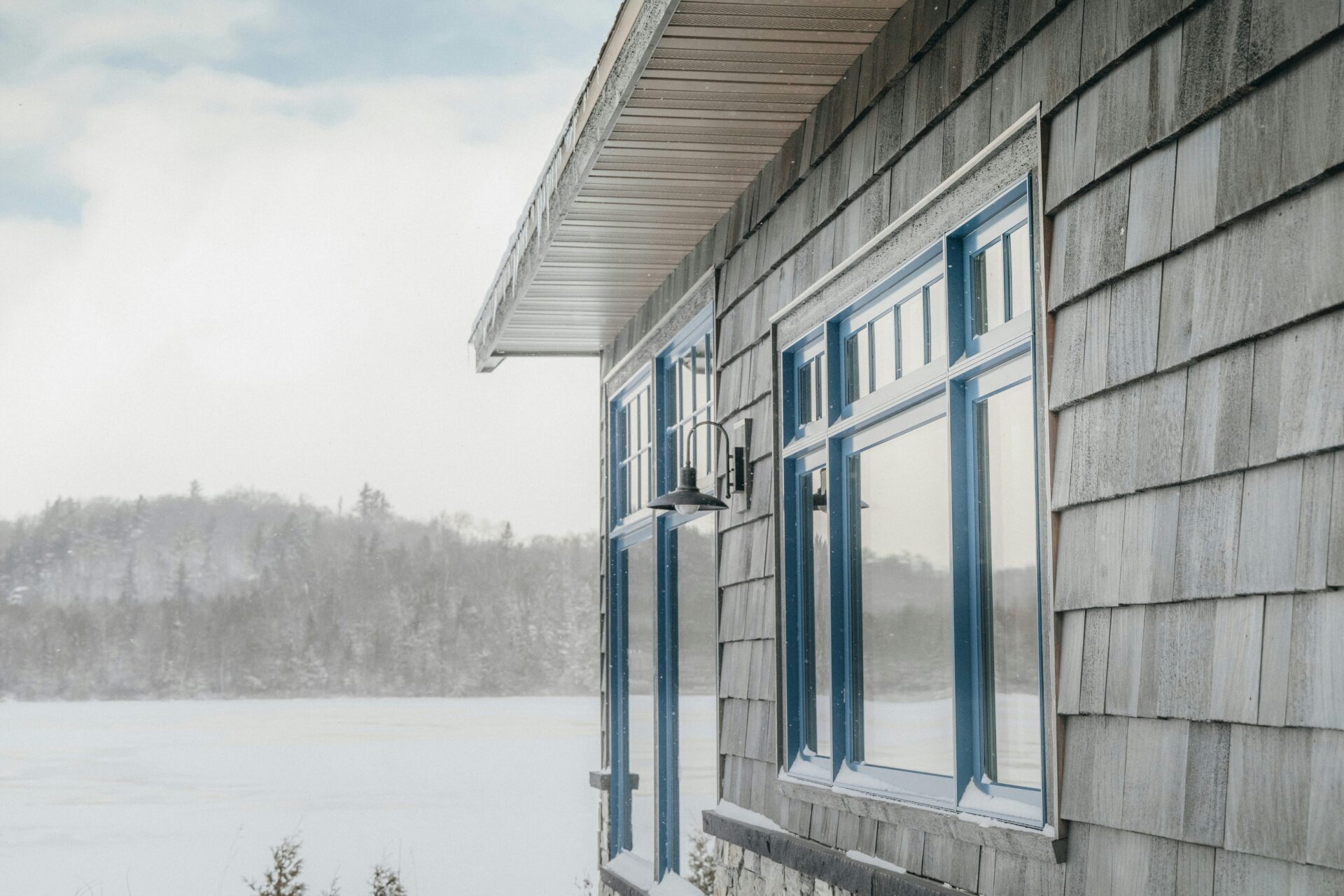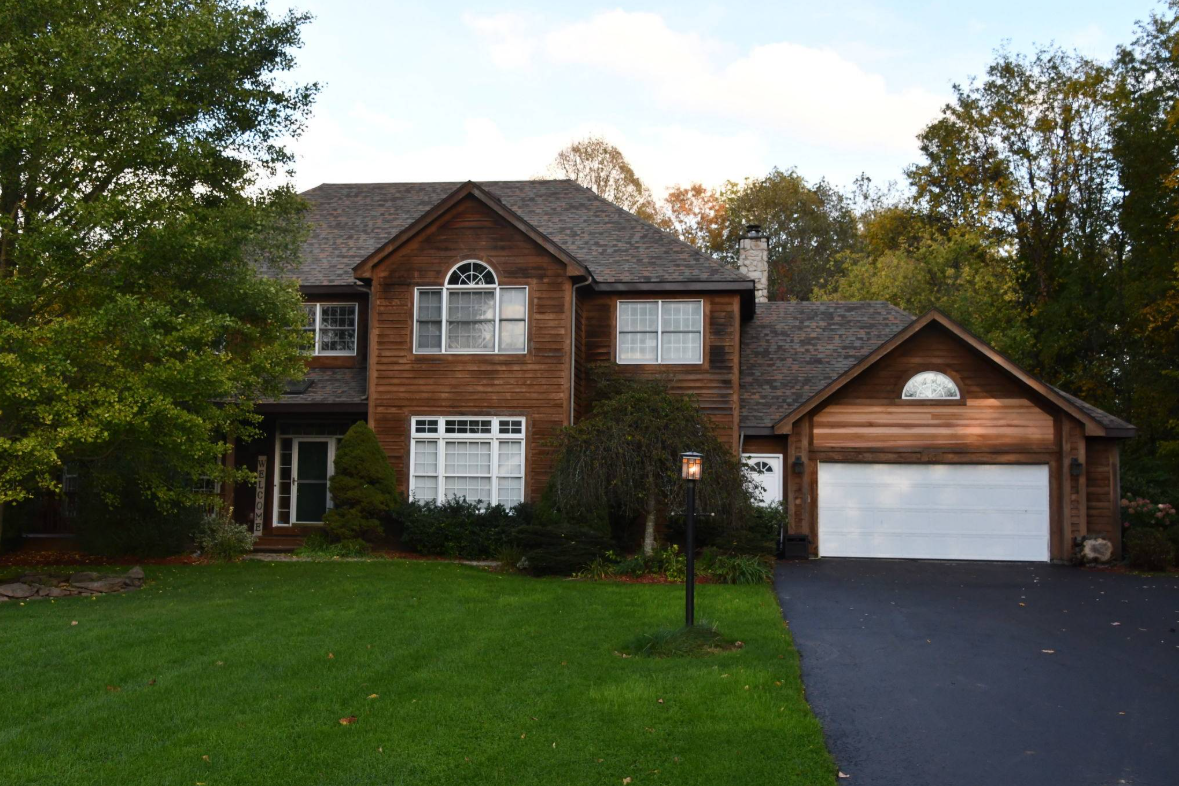As a homeowner, you recognize the importance of keeping your home safe and secure. Unfortunately, a common issue many homeowners face is a leaking roof.
A leaking roof can cause significant damage to your home if not addressed promptly. In this article, we will discuss practical steps you can take when your roof is leaking to minimize damage and ensure the safety of your home and belongings.
10 Steps On What To Do When Roof is Leaking:
When it comes to a leaky roof, you will want to ensure you take practical steps to assess roof damage, seek the correct roof repair, and prevent future leaks. We go through each step in detail below so you can figure out how to use a roofing company to help you replace a damaged roof or roofing material.
Step 1: Assess the Leaky Roof Damage and Safety Precautions
When you discover a leaking roof, the first step is to assess the damage. A thorough look at the affected area and determine the leak’s extent.
It’s crucial to prioritize safety during this process. If the leak is severe and water is dripping heavily, place buckets or containers to collect the water and prevent further damage.


Step 2: Move or Cover Belongings
To prevent your belongings from getting wet and damaged, moving or covering them is a must.
If the roof leak is directly above furniture or electronic equipment, remove them from the area.
Use plastic sheets or tarps to protect furniture, carpets, and other items that cannot be moved. Taking these precautions will help minimize the potential damage caused by water.
Step 3: Contain the Roof Leak
Contain the roof leak by using buckets or containers to catch the water.
Place them strategically under the leaking area to prevent water from spreading and causing further damage. Empty the containers regularly to avoid overflowing and causing additional issues.
Step 4: Find the Source of the Leak
Finding the source of the leak is important for effective repair. Trace the path of the water to determine where it is entering your home. It could be due to damaged shingles, cracked flashing, or a problem with the roof’s structure.
Identifying the source will help you address the issue more effectively.
Step 5: Temporary Fixes
If you can’t immediately repair the roof leak, consider temporary fixes to minimize damage. One option is to use a tarp to cover the affected area. Secure the tarp tightly to prevent water from seeping through.
Additionally, use roofing nails or heavy-duty tape to hold the tarp in place. While this is not a permanent solution, it can provide temporary relief until roofing repairs can be made.
Step 6: Document the Damage
Before contacting your insurance company, document the damage caused by the leak. Take photographs of the affected area, including any damaged belongings or property. These visuals will serve as evidence when filing an insurance claim and can help assess the repair costs.
Step 7: Contact a Professional Roofer
While temporary fixes can provide immediate relief, it’s crucial to contact a professional roofer for a permanent solution. A professional will have the expertise and tools to properly repair your roof and prevent further leaks. They can assess the extent of the damage and recommend the best course of action for repair or replacement.

Step 8: Preventative Maintenance For Future Roof Leaks
Once you have successfully repaired your roof, it is crucial to prioritize preventative maintenance to safeguard against future leaks and prolong the lifespan of your roof. By following a few key steps, you can minimize the risk of future problems and ensure the integrity of your roof for years to come.
Regular Inspections:
Schedule annual or bi-annual roof inspections with a professional roofing contractor. These inspections will allow experts to identify any potential issues, such as loose or damaged shingles, deteriorating flashing, or clogged gutters, before they escalate into major problems. They will also thoroughly examine the seals around vents, chimneys, and skylights to ensure they remain watertight.
Clear Debris from Gutters:
Debris, such as leaves, twigs, and dirt, can accumulate in your gutters over time, obstructing proper water flow and causing water to pool on your roof. This pooling can lead to leaks and water damage. Regularly clean your gutters to prevent this issue. Use a ladder and gloves to manually remove any debris, or consider installing gutter guards to minimize debris accumulation.
Trim Overhanging Branches:
Overhanging tree branches can scrape against your roof during storms or windy conditions, causing damage to shingles or even puncturing the roof’s surface. Regularly trim any branches that are within close proximity to your roof to prevent such damage. If necessary, consult with an arborist or professional tree trimmer to ensure the branches are cut properly and safely.

Ensure Proper Attic Ventilation:
Proper ventilation in your attic is essential for maintaining a healthy roof. Without adequate ventilation, heat and moisture can become trapped, leading to the deterioration of roofing materials and the formation of mold and mildew. Install ridge vents, soffit vents, or attic fans to promote air circulation and prevent moisture buildup. Consult a professional to determine the best ventilation system for your roof and attic configuration.
Address Immediate Repairs:
If you notice any signs of damage, such as missing or cracked shingles, water stains on interior ceilings, or leaks during heavy rain, address these issues promptly. Ignoring small problems can lead to more significant damage and costly repairs down the line. Contact a reputable roofing contractor to assess and fix any issues immediately.
By implementing these preventative measures, you can significantly reduce the risk of future leaks and extend the lifespan of your roof.
Regular inspections, gutter maintenance, trimming overhanging branches, ensuring proper attic ventilation, and addressing immediate repairs are key to maintaining a leak-free and durable roof. Investing in preventative maintenance now will save you time, money, and headaches from roof leaks in the future.
Step 9: Consider Insurance Coverage
If the damage caused by the leak is extensive, it may be covered by your homeowner’s insurance policy. Review your policy and contact your insurance company to determine if the repairs are eligible for coverage. Submit the necessary documentation, including photographs and estimates from the professional roofing company, to support your claim.
Step 10: Maintain a Healthy Roofing System With Roof Vents, Roof Sealant or A New Roof Altogether
To maintain a healthy roofing system, watch for signs of damage or deterioration.
- Regularly check for loose or missing shingles, damaged flashing, and any other potential vulnerabilities.
- Addressing these issues promptly can prevent future leaks and extend the lifespan of your roof.
Remember, a leaking roof should never be ignored. Taking immediate action and following these practical steps will help minimize damage and ensure the safety and integrity of your home.
Suppose you need more clarification about the damage’s extent or cannot perform repairs yourself. In that case, it’s always best to contact a professional roofer who can provide expert advice and assistance.
Don’t Wait To Repair Your Leaking Roof; Take Practical Steps Immediately!
Dealing with a leaking roof can be stressful, but you can effectively manage the situation with the proper steps. Assess the damage, prioritize safety, and take immediate action to prevent further damage.
Practice preventative maintenance and consider insurance coverage. By following these practical steps, you can protect your home and minimize the impact of a leaking roof.
FAQs on Leaking Roofs
Oaks Roofing & Siding: Quality You Can Trust
At Oaks Roofing & Siding, we offer various dumpster sizes to meet your needs. Our dedicated representatives are always here to answer questions so your rental process goes smoothly. Call or contact us today, and we'll be happy to help.



